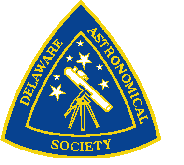

|
Don Shedrick |
Mar 5, 2000 |
March DAS Focus
COMPUTERS IN ASTRONOMY by Don Shedrick
During the January meeting we had some excellent presentations on how to find celestial objects in the night sky, including "Star Hopping". This is a good technique for finding the popular Messier objects. Named for the 18th Century French astronomer Charles Messier who first cataloged the objects, backyard astronomers consider the 110 Messier objects the most splendid targets for viewing with binoculars and small telescopes. In this month’s article, I will present some computer viewing aids to help in finding the Messier and other deep sky objects. This is particularly timely this month since the weekends of March 10 and March 31 are prime times for a "Messier Marathon," when the Sun lies in a part of the zodiac devoid of these celestial showpieces, and it is possible for you insomniacs to log all 110 of them in a single night.
The Ultimate Messier Object Log is a good place to start to familiarize yourself with these celestial objects. Available as a free pdf file (you will need Adobe Acrobat Reader to view it) from David Paul Green's Web site at:
http://www.davidpaulgreen.com/tumol.html
This Messier object log contains a photograph of each of the 110 Messier objects with a description of type, magnitude, and constellation in which it is located. In addition, there are various versions of observing log sheets sorted by Messier number, constellation, best viewing Season, and recommended viewing sequence for a Messier Marathon.
The Magnificent 1000 Tom Hoffelder, one of the inventors of the Messier Marathon, has compiled an observing list of 1000 Deep Sky objects which he has named "The Magnificent 1000". It is a table that summarizes basic information on the 1000 best deep sky objects. The listed galaxies, clusters and nebulae are arranged by constellation and include all the Messier Objects, the "Finest NGC Objects" as listed in the Observer’s Handbook 1997 and the "Herschel 400" and "Herschel II" of the Astronomical League’s Observe. The information provided in each column includes the object type, magnitude, size, and most importantly, "Right Angle Sweep" coordinates. These give an easy method to find each object by giving the distance and direction in degrees by which one would sweep in declination and right ascension from a nearby bright star to reach the desired object. An equatorial mount is highly desirable for this, but only approximate polar alignment is necessary, making this technique very easy to use. An eyepiece giving about one degree true field is the best to use. A description of the list is available at :
http://www.seds.org/messier/xtra/similar/m1000doc.txt
and the list is available at:
http://www.seds.org/messier/xtra/similar/m1000.txt
SEDS Messier Deep-Sky Catalog is from SEDS, the Students for the Exploration and Development of Space. They have a web site for the Messier objects at:
This has photographs, locator star maps from Home Planet, many links to other information on Messier objects and other deep sky objects, and an extensive history of French astronomer Charles Messier. It is interesting to note that Messier was a comet hunter, and after discovering M1 in Taurus, resolved to find more such objects, because, as he wrote in 1801, "This nebula had such a resemblance to a comet in its form and brightness that I endeavored to find others, so that astronomers would no more confuse these same nebulae with comets just beginning to appear. I observed further with suitable refractors for the discovery of comets, and this is the purpose I had in mind in compiling the catalog." He is now more famous for his catalog of deep sky objects than for comet discoveries. There is vast info and many links information on Messier Marathons at:
http://www.seds.org/messier/xtra/marathon/marathon.html
Messier Marathon log sheets by Stephen Tonkin in various formats are available at one of these links:
http://www.geocities.com/sftonkin/messier/messlog.htm
He also has Messier object finder charts for both binoculars and telescopes for download at:
http://www.geocities.com/sftonkin/messier/messchart.htm
William Herschel's Catalog of Deep Sky Objects will satisfy your needs if you are looking for more observing challenge than the Messier objects offer. You will want to look at the SEDS web site at:
http://www.seds.org/messier/xtra/similar/herschel.html
This has the catalog of over 2500 deep sky objects which Herschel and his sister Caroline compiled. The site also has an extensive history of Herschel. As the most renowned astronomer of his time, William Herschel contributed significantly to most branches of astronomy. Besides searching clusters and nebulae, he discovered planet Uranus in 1781, two satellites of Uranus, Titania and Oberon, in 1787, and Saturn's moons Mimas and Enceladus in 1789, all from the garden of his house in Bath, England which I visited several years ago. It is now an interesting little museum.
The Interactive NGC Catalog Online The NGC Catalog was originally compiled by J.L.E. Dreyer and published 1887. It contains open and globular star clusters, diffuse and planetary nebulae, supernova remnants, and galaxies of all types. The current catalog can be found at the SEDS site:
http://www.seds.org/~spider/ngc/ngc.html
This web site will give you the NGC 2000 data for each NGC (also IC and Messier) object by simply entering its catalog number. In addition, you get a link for downloading an image of the object from the Digital Sky Survey.